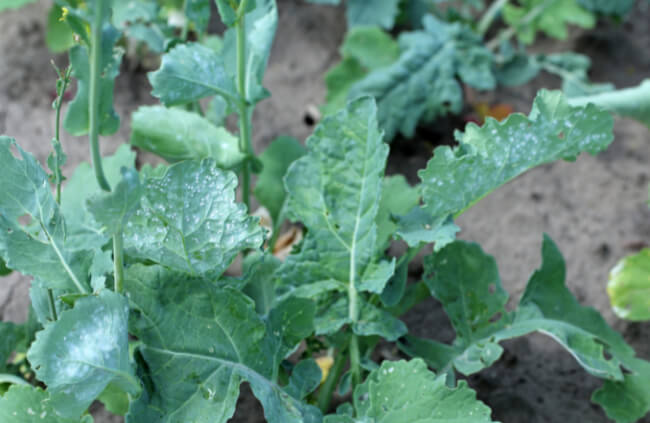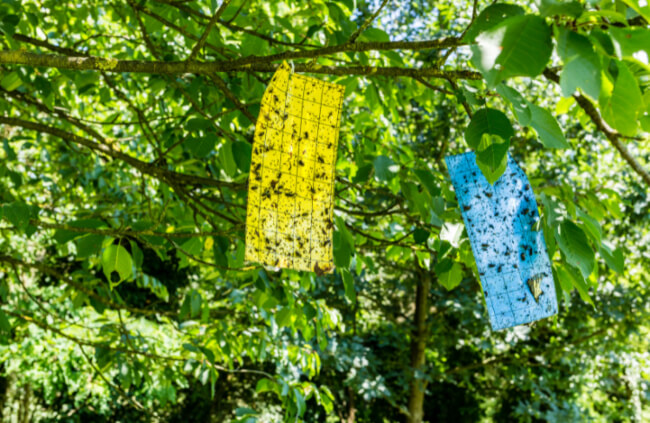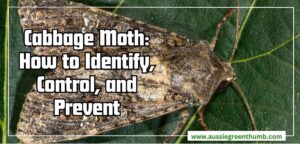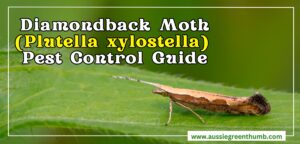Whether it's perennial herbaceous plants, or annual veggies, whiteflies present a challenge, but not an insurmountable one. Whiteflies, however, don’t cause as much of a problem as you might think, it’s only when they’re carrying a fungal pathogen or bacteria that havoc erupts.
Brassicas (cabbage, kale, broccoli, etc.) in particular can be a haven for these tiny insects that gather in their thousands on the underside of leaves, protected from rain, hoses, and baking summer heat. They mate in recurring patterns right through spring and summer, and often even into early winter, so once you’ve got them, removing them becomes a weekly ritual.
Follow our guide for detailed information on how to get rid of whiteflies from your garden, and how to manage them once they’re there.
More...

Species | Over 1500 |
|---|---|
Family: | |
Superfamily: | Aleyrodoidea |
Common Name: | Whitefly |
Type: | Winged herbivorous insects |
Size: | 1-2mm long |
Key features: | Gather in large numbers, fly in groups from disturbed plants |
Colour: | White |
Effects: | Suck sap, damaging and scarring foliage, particularly on brassicas and beans |
Prevention: | Predators, Deterrent plants, Organic pesticides, Water jets |
What are Whiteflies?
Whiteflies are tiny winged insects that feed on the sap of plants from all parts of the leaf, but particularly focus on the midrib of brassica leaves. At roughly 1 mm long, and 5 mm across, they really are small flies, so are more noticeable once an infestation has settled in.
When you shake your plants, they tend to fly off in a cloud, before settling back down on nearby plants. Despite popular myth, they do not die when washed onto damp soil, but it is one way to slow their development and spread.
Whiteflies Natural Habitat
Whiteflies are native to every corner of the globe. Wherever there is vegetation they will seek shade and shelter, and feed on whatever foliage they can find.
They are naturally attracted to the scent of brassicas, and therefore problematic for commercial cabbage farmers, or mustard and rapeseed fields, where they are generally dealt with through chemical insecticide.
For smaller-scale allotment gardens, it’s worth considering natural prevention, which can include anything from other insects to water, to DIY insecticides that are safe for you and your family.
What Plants Do Whitefly Effect?
Whiteflies affect nearly every plant species but are put off by aromatic foliage like lavender, mint, or citronella. Most herbs can provide good protection, and marigolds, nasturtiums, or basil are a great way to deter them from selecting precious crops.
In the garden, they will typically flock to the new shoots of herbaceous perennials like thalictrum or cosmos, but wherever there are leafy greens like chard, cabbage, spinach or beans to be found, they will choose that instead.
We recently found that they were particularly attracted to morning glory, so planted some as a sacrificial climber near our beans. It wasn’t 100% effective, but it did seem to reduce their numbers elsewhere.
How to Identify Whiteflies
Whiteflies are easy to identify, simply because of the way they behave. There are other white flies, like white aphids, but they are larger, and gather in tighter clusters. Up close, whiteflies have a fine, silky-white appearance, with delicate wings (about 2-3 mm across in flight).

How to Spot Whiteflies
The easiest way to find whiteflies is to shake your plants. Unlike aphids and greenfly, whitefly instantly reacts to disturbance by flying into the air. It will settle back down in the same spot, or nearby, but you’ll know they’re there.
When it comes to harvest time, particularly for brassicas, make sure to rinse the plant thoroughly if it has whitefly, as there will nearly always be some pale, dusty residue left on the underside of leaves.


Get Your Free Guide:
Master Growing Australian Natives eBook
A Must Have Complete Guide for Every Australian Garden
Get Your Free Guide:
Master Growing Australian Natives eBook
A Must Have Complete Guide for Every Australian Garden
Where to Find Whiteflies on Plants
Rather than exclusively feeding from one part of the plant, whiteflies can gather on the surface of leaves but usually settle on the underside to shelter from rain, wind or direct sunlight.
This makes them harder to spot, but by shaking your plants you can dislodge and disrupt adults so they make themselves known in a powdery cloud of flying insects.
Signs of Whiteflies Damage on Plants
The most common damage caused by whiteflies isn’t by their feeding. They actually do very little direct damage to leaves. Instead, it is caused by the dusty-looking, sticky white substance they excrete, called honeydew.
This leaves a fine coating of white, often across entire leaves (on ball-forming cabbages, this will be on every part, on open kales, it is more likely to be found on the underside).
The honeydew of whitefly increases and locks in humidity on the leaf surface, so even if a fly wasn’t directly carrying fungal spores of pathogens like rust (quite likely on leeks and legumes) it makes the leaf more hospitable to other wind-spread funguses like mildew.
What Causes Whiteflies
There are a few common theories as to why whiteflies are attracted to certain crops, but just two really play out in all cases; overfeeding, and under-spacing. You can see how the two play hand in hand to support and attract whitefly populations to your garden simply by observing the passing of the seasons, and the development of plants.

Overfeeding plants can cause whitefly
For example, as you begin to feed tomatoes, and they grow out into denser groupings, whiteflies are more attracted to them. This is because whiteflies love nitrogen just as much as your tomatoes.
So when you begin feeding them nitrogen-rich fertilisers, too much will signal an invasion of whitefly, who know full well that these plants have nitrogen to spare. Cabbage, heavy feeders from day one, are packed with nitrogen, so their young leaves will be affected.
After a brief window in early summer, when you might think your whiteflies have left, you’ll find them coming back once the cabbages have grown into large, more tightly packed spaces, providing shelter for whiteflies later in the season.
Under-spacing plants can attract whitefly
Healthy and well-spaced plants are spaced based on the airflow they need, as much as the nutrients they need to share. Planting too tightly together at the seedling stage will mean whiteflies are instantly given shelter, making a perfect home for young populations to boom.
Aim to plant your veggies so that mature plants still have some space and airflow between them. This won’t eliminate the problem, but it will reduce it.
Lack of Predators / Biodiversity
Parasitic wasps and predatory insects, like mites and some beetles, make light work of whitefly. Ladybugs are a useful insect to have on your side for that reason, as they eat both aphids and whiteflies with equal vigour, and can be introduced in packs from specialist suppliers to quickly boost your natural pest control.
How to Prevent Whiteflies
Whiteflies are an inevitable part of gardening, so it’s virtually impossible to prevent them altogether, but it’s definitely possible to limit their numbers and reduce how attractive your crops are to them.

What Plants Help Prevent Whiteflies
Any heavily scented, oily plants, like thyme, lavender, rosemary or eucalyptus will naturally keep whiteflies away from that part of your garden. Planting lavender hedges around raised beds, for example, creates a low-maintenance natural deterrent against whiteflies, that won’t be 100% effective, but will certainly help to limit their numbers.
In enclosed growing spaces like greenhouses, or indoor gardens, plant herbs like basil, or scented leaved plants like marigolds, which really work effectively to limit whitefly numbers.
Here is a list of growing guides from some of the plants mentioned above:
How to Care for Plants to Prevent Whiteflies
The easiest prevention method for whiteflies is to limit feeding your plants. It’s organic because it’s about method, not material. Adding compost and rotted manure to your soil or raised beds provides slow-release nutrients that support plant development, without a weekly boost of nitrogen that most plants don’t really need.
How to Get Rid of Whiteflies
Whitefly Treatments
If you’ve got the time, and want to save money, making your own DIY whitefly treatments is simple, but over the counter treatments are effective and fairly budget friendly. When it comes to choosing the right treatment, it’s all about the lifecycle of the fly and how serious your whitefly infestation is.
Homemade & DIY Whitefly Treatments

1. Regular checks and leaf wiping
The easiest way to manage whitefly populations is to wipe their eggs off leaves. Adult whiteflies have short life spans (about 20 days), but lay dozens of eggs in that time, which hatch into larvae that depend on the leaf to survive.
Eggs are laid directly onto the underside of leaves in powdery white rings. Wiping them off will kill them, and if it doesn’t, once they hatch on the ground they can’t survive into adulthood.
2. Soapy water
Soapy water will kill adult whiteflies almost instantly. It sticks to their bodies and coats them, making it impossible to breathe. Simply mix a few drops of dish soap into a spray bottle and spray directly onto any affected leaves.
This won’t kill eggs, so will require repeat applications, but will break the lifecycle if regularly repeated over a few weeks.
3. Neem and castile soap
Neem oil is a natural pest repellent and pesticide. Castile soap is a natural pesticide, which also works to coat insects, similarly to dish soap. In combination, mixed in small quantities with water you can create a simple homemade spray that can be used whenever you see a problem.
The spray will suffocate adults and dehydrate eggs, completely breaking the lifecycle of that cluster.
4. Spraying with water
Spraying the leaves of your veggies with a strong jet of water will dislodge whiteflies, and helps to rinse off honeydew. When done in the morning, leaving whiteflies and their eggs to bake on the floor will usually do a good job of reducing populations.
However, adult whiteflies can dry off quickly and fly back to the plant, so this will require very regular repeats to be effective.
5. Companion planting
The easiest long-term way to limit whiteflies, either in the greenhouse or in the garden is with clever companion planting. Ornamental shrubs like lavender or rosemary make great protective hedges, and onions help to mask the scent of brassicas too.
For greenhouses, basil is the best whitefly deterrent, and often works very effectively as keeping them off tomatoes completely.
Store-Bought Whitefly Treatments
1. Horticultural oil
Horticultural oil is a pre-mixed version of the DIY neem and castile soap treatment, but comes in varying solutions, often with various essential oils to lengthen its effectiveness as a deterrent.
The best horticultural oil we’ve found, and the best value is this neem oil for dilution which is ready to mix with water.
2. Flypaper

Flypaper is a particularly useful whitefly killer for greenhouses or indoor spaces. Outdoors, it will dry out quickly in direct light, and will be damaged by rain, but for indoor use, it makes for a quick and simple solution that won’t harm larger insects.
Our current favourite is this value pack of 36 flypaper boards.
3. Organic insecticides
Yates’ natural insecticidal spray uses non-toxic soap to coat, suffocate and desiccate insects, and comes with minimal risk to pollinators. Avoid spraying directly onto bees or butterflies, and target just the infestation of whiteflies to get the most from this simple soap-based insecticide.
Tips for Dealing with Whiteflies in the Garden
With all that in mind, there are basically four things you need to remember;
- Plant cleverly with scented companion plants
- Check regularly for eggs, and remove them
- Avoid overfeeding to limit whitefly food sources
- Space plants properly to remove whitefly shelter
If you keep on top of those basic rules, you can manage and deter whitefly infestations within the principles of organic gardening. If that doesn’t work, there are plenty of organic options for dealing with them, like neem, organic soaps, and simple leaf washing that will help kill off an over-expanded population of whiteflies.
Whiteflies Frequently Asked Questions
Why are there so many whiteflies?
Whiteflies are incredibly abundant all over the world, but particularly attracted to young shoots. On brassicas and other veggies, our hot summers tend to attract them faster, because plants develop faster, and can bolt.
Those young flower stems make great food for whiteflies, leading to sudden population booms in summer.
How long do whiteflies live?
There are over 1500 species of whiteflies, and on average, they live for about 20 days, but there are some that live for just one week, and others that can live for over a month. Their adult lifespan is usually around two weeks, with most of their life spent as eggs and larvae.
Can a whitefly bite?
Whiteflies can’t bite humans. Not only is its dietary preference vegetative, but it also has such minuscule mouth parts that it physically can’t pierce human skin, so whiteflies don’t pose any risk to humans.
Do ladybirds eat whiteflies?
Ladybirds eat whitefly, and are probably the best long-term solution for limiting and preventing whitefly in your garden. However, you will need to either buy them from a specialist supplier or plant umbellifer (umbrella-shaped) flowers to attract them.
Now You Know How to Get Rid of Whiteflies in Your Garden
Whiteflies aren’t the end of the world. They won’t completely ruin a crop. And even if they do lead to mildew, you can simply remove those leaves and treat the rest with an organic fungicide like neem oil.
With proper management, and regular checks on and around your plants, you can still get a full harvest from any garden, even with a whitefly infestation, so don’t panic, stay calm, and keep gardening.
Published on June 23, 2023 by Gary Clarke
Last Updated on February 5, 2025




